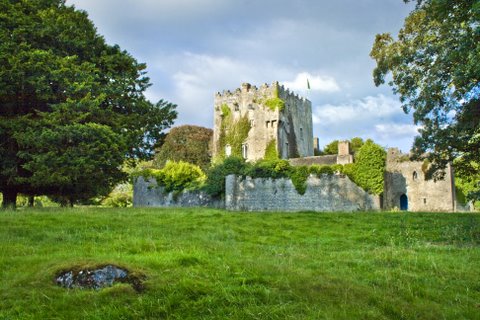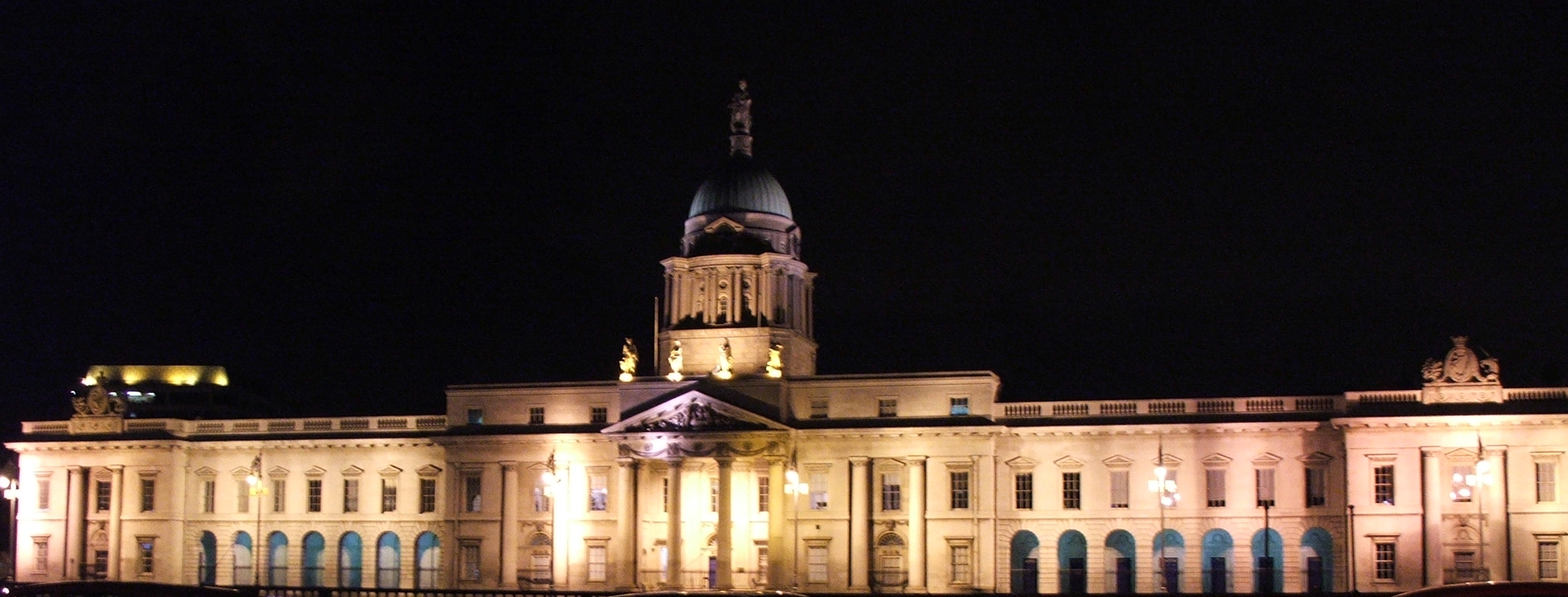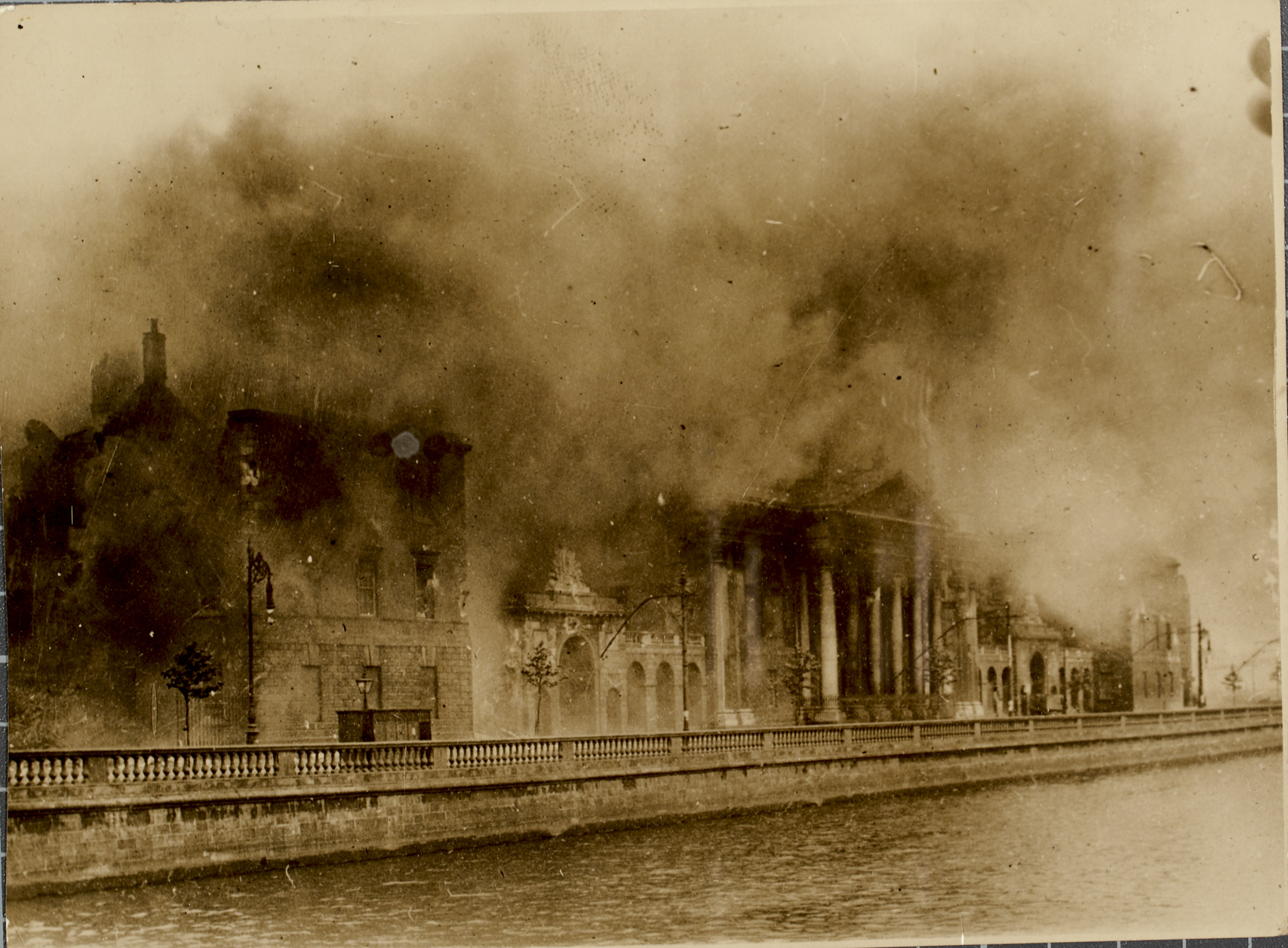|
1796 In Ireland
Events from the year 1796 in Ireland. Incumbent *Monarch: George III Events *1 February – Wolfe Tone arrives in France. *12 July – first Orange Institution parades on The Twelfth held to commemorate the Battle of the Boyne ( 1690) in Portadown, Lurgan and Waringstown. *9 August – the convict ship '' Marquis Cornwallis'' leaves Cork for Australia. *September – 'Gold rush' in the Wicklow Hills near Avoca. *10 December – the convict ship ''Britannia'' leaves Cork for Australia. *15 December – Expédition d'Irlande: French expedition (43 ships and 14,000 men) sails from Brest. *22 December – French fleet, with Wolfe Tone on board, arrives in Bantry Bay, but is unable to land due to contrary winds. *Insurrection Act and Treason by Women Act passed. *Yeomanry Corps formed. *Building of the Four Courts in Dublin is substantially completed under the supervision of James Gandon. Arts and literature *Edward Bunting's ''A General Collection of the Ancient Irish Music'' is pub ... [...More Info...] [...Related Items...] OR: [Wikipedia] [Google] [Baidu] |
Irish Monarch
Irish may refer to: Common meanings * Someone or something of, from, or related to: ** Ireland, an island situated off the north-western coast of continental Europe ***Éire, Irish language name for the isle ** Northern Ireland, a constituent unit of the United Kingdom of Great Britain and Northern Ireland ** Republic of Ireland, a sovereign state * Irish language, a Celtic Goidelic language of the Indo-European language family spoken in Ireland * Irish people, people of Irish ethnicity, people born in Ireland and people who hold Irish citizenship Places * Irish Creek (Kansas), a stream in Kansas * Irish Creek (South Dakota), a stream in South Dakota * Irish Lake, Watonwan County, Minnesota * Irish Sea, the body of water which separates the islands of Ireland and Great Britain People * Irish (surname), a list of people * William Irish, pseudonym of American writer Cornell Woolrich (1903–1968) * Irish Bob Murphy, Irish-American boxer Edwin Lee Conarty (1922–1961) * Irish McCal ... [...More Info...] [...Related Items...] OR: [Wikipedia] [Google] [Baidu] |
Avoca, County Wicklow
Avoca () is a small town near Arklow, in County Wicklow, Ireland. It is situated on the River Avoca. The Avoca area has been associated with its copper mines for many years and the valley has been celebrated by Thomas Moore in the song " The Meeting of the Waters". The name of the song derives from the meeting of the Avonmore and Avonbeg rivers, about 3 kilometres from the village of Avoca. The song is said to have been written under a tree, the stump of which remains by the Meetings. Avoca is also famous for its handweaving, with Avoca Handweavers based there. Avoca has been used as a filming location for several films and television series. The BBC series ''Ballykissangel'' was filmed there. In 1967, Avoca was one of the locations used in the film ''Jules Verne's Rocket to the Moon'', and it was the setting for the comedy film ''Zonad'' which had a general Irish release in 2010. The red kite, recently reintroduced to Ireland, is now commonly seen in and around Avoca. Top ... [...More Info...] [...Related Items...] OR: [Wikipedia] [Google] [Baidu] |
1853 In Ireland
Events from the year 1853 in Ireland. Events *15 February – City of Dublin Steam Packet Company , inward bound from Liverpool, sinks in a snowstorm at night below Baily Lighthouse on Howth Head with the loss of more than 80 lives. *12 May–31 October – Great Industrial Exhibition (1853), Great Industrial Exhibition held in Dublin, promoted by William Dargan. Queen Victoria, accompanied by the Albert, Prince Consort, Prince Consort and the Edward VII, Prince of Wales, pays an official visit on 29 August. John Hutton & Son of Dublin exhibit the Irish State Coach. Births *30 January – Leland Hone, cricketer (died 1896 in Ireland, 1896). *6 February – Robert John McConnell, businessman, baronet and Lord Mayor of Belfast (died 1927 in Northern Ireland, 1927). *7 February – Egerton Bushe Coghill, painter (died 1921 in Ireland, 1921). *30 March – Frank O'Meara, artist (died 1888 in Ireland, 1888). *March – John Doogan, soldier, recipient of the Victoria Cross for gallant ... [...More Info...] [...Related Items...] OR: [Wikipedia] [Google] [Baidu] |
Surgeon
In modern medicine, a surgeon is a medical professional who performs surgery. Although there are different traditions in different times and places, a modern surgeon usually is also a licensed physician or received the same medical training as physicians before specializing in surgery. There are also surgeons in podiatry, dentistry, and veterinary medicine. It is estimated that surgeons perform over 300 million surgical procedures globally each year. History The first person to document a surgery was the 6th century BC Indian physician-surgeon, Sushruta. He specialized in cosmetic plastic surgery and even documented an open rhinoplasty procedure.Ira D. Papel, John Frodel, ''Facial Plastic and Reconstructive Surgery'' His magnum opus ''Suśruta-saṃhitā'' is one of the most important surviving ancient treatises on medicine and is considered a foundational text of both Ayurveda and surgery. The treatise addresses all aspects of general medicine, but the translator G. D. Si ... [...More Info...] [...Related Items...] OR: [Wikipedia] [Google] [Baidu] |
Robert James Graves
Robert James Graves, F.R.C.S. (27 March 1796 – 20 March 1853) was an eminent Irish surgeon after whom Graves' disease takes its name. He was President of the Royal College of Physicians of Ireland, Fellow of the Royal Society of London and the co-founder of the ''Dublin Journal of Medical Science''. He is also the uncredited inventor of the second-hand on watches. Early life The eighth child of the Dean of Ardagh, Richard Graves, and Elizabeth Mary Drought (1767–1827), daughter of Rev. James Drought (1738–1820) D.D., of Dublin and Park, "a member of one of the principal families of the King's County (Offaly)," whose mother was the sister of Theaker Wilder. Wilder, Robert's father and maternal grandfather were all Senior Fellows of Trinity College Dublin, where in 1811 he was entered under his elder brother-in-law, Thomas Meredith, after receiving his early schooling in Downpatrick and Dublin. After a brilliant undergraduate career in the arts, he received a degree in med ... [...More Info...] [...Related Items...] OR: [Wikipedia] [Google] [Baidu] |
Edward Bunting
Edward Bunting (1773–1843) was an Irish musician and folk music collector. Life Bunting was born in County Armagh, Ireland. At the age of seven he was sent to study music at Drogheda and at eleven he was apprenticed to William Ware, organist at St. Anne's church in Belfast and lived with the family of Henry Joy McCracken. At nineteen he was engaged to transcribe music from oral-tradition harpists at the Belfast Harp Festival in 1792. As Bunting was a classically trained musician, he did not understand the unique characteristics of Irish music, such as modes, and when transcribing tunes he 'corrected' them according to Classical music rules. One proof of this is that some tunes published by him were in keys that could not have been played by the harpists. His notes on the harpists, how they played and the terminology they used is however invaluable, and also many tunes would have been lost if he had not collected them. Bunting's arrangement of the festival melodies for the pian ... [...More Info...] [...Related Items...] OR: [Wikipedia] [Google] [Baidu] |
James Gandon
James Gandon (20 February 1743 – 24 December 1823) was an English architect best known for his work in Ireland during the late 18th century and early 19th century. His better known works include The Custom House and the surrounding Beresford Place, the Four Courts and the King's Inns in Dublin and Emo Court in County Laois. Early life Gandon was born on 20 February 1742 in New Bond Street, London, at the house of his grandfather Peter Gandon, a French Huguenot refugee. He was the only son of Peter Gandon (b. 1713), a gunmaker, and Jane Burchall (possibly née Wynne). From 1749 he was educated at Shipley's Drawing Academy where he studied the classics, mathematics, arts and architecture. On leaving the drawing academy he was articled to study architecture in the office of Sir William Chambers. Chambers was an advocate of the neoclassical evolution of Palladian architecture, although he later made designs in the Gothic Revival style. However, it was Chambers's palladian ... [...More Info...] [...Related Items...] OR: [Wikipedia] [Google] [Baidu] |
Dublin
Dublin (; , or ) is the capital and largest city of Republic of Ireland, Ireland. On a bay at the mouth of the River Liffey, it is in the Provinces of Ireland, province of Leinster, bordered on the south by the Dublin Mountains, a part of the Wicklow Mountains range. At the 2016 census of Ireland, 2016 census it had a population of 1,173,179, while the preliminary results of the 2022 census of Ireland, 2022 census recorded that County Dublin as a whole had a population of 1,450,701, and that the population of the Greater Dublin Area was over 2 million, or roughly 40% of the Republic of Ireland's total population. A settlement was established in the area by the Gaels during or before the 7th century, followed by the Vikings. As the Kings of Dublin, Kingdom of Dublin grew, it became Ireland's principal settlement by the 12th century Anglo-Norman invasion of Ireland. The city expanded rapidly from the 17th century and was briefly the second largest in the British Empire and sixt ... [...More Info...] [...Related Items...] OR: [Wikipedia] [Google] [Baidu] |
Four Courts
The Four Courts ( ga, Na Ceithre Cúirteanna) is Ireland's most prominent courts building, located on Inns Quay in Dublin. The Four Courts is the principal seat of the Supreme Court, the Court of Appeal, the High Court and the Dublin Circuit Court. Until 2010 the building also housed the Central Criminal Court; this is now located in the Criminal Courts of Justice building. Court structure The building originally housed four superior courts, of Chancery, King's Bench, Exchequer and Common Pleas, giving the name to the building. Under the Supreme Court of Judicature Act (Ireland) 1877, these four courts were replaced by two - the Court of Appeal, presided over by the Lord Chancellor, and the High Court of Justice, headed by the Lord Chief Justice - but the building has retained its historic name. Under the Courts of Justice Act 1924, courts were established for the new Irish Free State with the Supreme Court of Justice, presided over by the Chief Justice, replacing the ... [...More Info...] [...Related Items...] OR: [Wikipedia] [Google] [Baidu] |
Yeomanry
Yeomanry is a designation used by a number of units or sub-units of the British Army, British Army Reserve (United Kingdom), Army Reserve, descended from volunteer British Cavalry, cavalry regiments. Today, Yeomanry units serve in a variety of different military roles. History Origins In the 1790s, following the French Revolution and the rise of Napoleon Bonaparte, the perceived threat of invasion of the Kingdom of Great Britain was high. To improve the country's defences, British Volunteer Corps, Volunteer regiments were raised in many counties from yeoman, yeomen. While the word "yeoman" in normal use meant a small farmer who owned his land, Yeomanry officers were drawn from the nobility or the landed gentry, and many of the men were the officers' tenants or had other forms of obligation to the officers. At its formation, the force was referred to as the Yeomanry Cavalry. Members of the yeomanry were not obliged to serve overseas without their individual consent. Early 19th ... [...More Info...] [...Related Items...] OR: [Wikipedia] [Google] [Baidu] |
Treason By Women Act (Ireland) 1796
The Treason by Women Act (Ireland) 1796 (36 Geo 3 c 31 (I)) was an Act of Parliament, Act of the Parliament of Ireland, Parliament of the Kingdom of Ireland which reduced the penalty for women convicted of high treason and petty treason from death by burning to death by hanging. It was the Irish equivalent of the Treason Act 1790 passed by the Parliament of the Kingdom of Great Britain. In the Republic of Ireland, the act was explicitly repealed by the Statute Law Revision (Pre-Union Irish Statutes) Act 1962. In Northern Ireland, the short title was assigned in 1951, and the act was explicitly repealed on 30 September 1998 by the Crime and Disorder Act 1998.Crime and Disorder Act 1998, s.120(2) and Schedule 10; commenced bart. 2(1)(g) and (3)(c)of The Crime and Disorder Act 1998 (Commencement No. 2 and Transitional Provisions) Order 1998 (S.I. 1998/2327) See also *Treason Act References External links Acts of the Parliament of Ireland (pre-1801) 1796 in law 1796 in Ire ... [...More Info...] [...Related Items...] OR: [Wikipedia] [Google] [Baidu] |
Bantry Bay
Bantry Bay ( ga, Cuan Baoi / Inbhear na mBárc / Bádh Bheanntraighe) is a bay located in County Cork, Ireland. The bay runs approximately from northeast to southwest into the Atlantic Ocean. It is approximately 3-to-4 km (1.8-to-2.5 miles) wide at the head and wide at the entrance. Geographic features Bantry Bay is a ria, a bay formed from a drowned river valley as a result of a relative rise in sea level. The bay is a deep (approx 40 metres in the middle) and large natural bay, with one of the longest inlets in southwest Ireland, bordered on the north by Beara Peninsula, which separates Bantry Bay from Kenmare Bay. The southern boundary is Sheep's Head Peninsula, separating Bantry Bay from Dunmanus Bay. The main islands in the bay are Bere Island and Whiddy Island. Bere Island is located near the entrance to the bay. On the north side of the island is Berehaven Harbour and Castletown Bearhaven port. The town of Rerrin is the largest settlement on the island. The vill ... [...More Info...] [...Related Items...] OR: [Wikipedia] [Google] [Baidu] |






